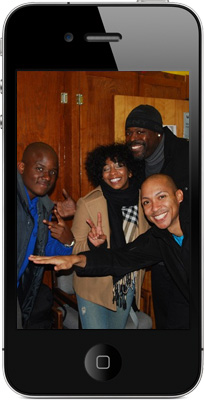Historically black colleges and universities were founded to give African-American students an option for higher education when they had none.
Today, many years later, there are more options, and many African-American students are taking advantage of that, with nearly 19,000 enrolled in predominately white institutions (referred to as PWIs) in Louisiana.
In fall 2016, more than 10,000 were in enrolled in the state’s three four-year HBCUs, plus almost 3,000 in its one historically black two-year institution, according to data from the Louisiana Board of Regents.
“The bulk of African-American students are enrolling at majority schools,” said Alvin Schexnider, a 1968 graduate of Grambling State University. “… Students have options we didn’t have when I was a student, and they’re exercising that option — faculty and staff, too.”
MORE: Take a look at college VPs salaries | When does school start again?
In light of that, some argue HBCUs no longer have a place. However, experts such as Schexnider, a senior fellow at the Association of Governing Boards of Universities and Colleges and author of a 2013 book called “Saving Black Colleges,” disagree.
“Historically black institutions still play a vital role,” Schexnider said. “They are still needed.”
“I think there will always be certain students who find an historically black institution a better fit,” he continued. “I think there is a fit for every student. Some fare better in certain environments than others. Just as I think there will always be a need for single-sex schools like Spelman or Sweet Briar.”
“It affords a choice. And it’s one some African-American students prefer.”
But that doesn’t mean the institutions should remain as they always were.
“Unless some adapt to change, they won’t survive,” Schexnider said. “And survival shouldn’t be the goal. Sustainability should be.”
Louisiana is home to six HBCUs, both public and private. Three are within the Southern University System.
And like other schools in the state, they face many challenges — declining enrollment and budgets and small endowments — to counter that.
“The public institutions, especially, their budgets have just been eviscerated,” Schexnider said. “… Institutions that are not well-endowed or have state support … are at a distinct advantage.”
Related:Do college leaders look like their students? | How you can pay for college
Enrollment in Louisiana HBCUs, according to Board of Regents fall data:
Ray Belton, chancellor of the Southern University System and its flagship in Baton Rouge, said the budget shortfalls and drops in enrollment have “wreaked havoc on our ability to operate.”
“It compromises student support services,” he said. “That is an area we can least afford to compromise.”
This environment of student support and access is what makes HBCUs unique, he said.
“Then we become nothing more than a regional university with a demographic that happens to be African-American,” Belton said.
So what can the schools do today?
“Schools need to rethink their business model and there is a big, big need to get people who are strong leaders not just as president but also on governing boards who under stand global competition,” Schexnider said. “It’s getting good people on governing boards.”
Another part of the business model change would be to recruit students of all demographics.
“We’ve got to diversify the enrollment and make offerings that are attractive to white students, to Asian students, Hispanic students,” he said. “It’s making sure the schools don’t depend exclusively on African-American students.”
MORE: College to push students to think global | What’s driving students to community college?
He said leadership has to be intentional in that, which could mean hiring recruiters and faculty in those demographics as well.
“And some alumni might react negatively to this shift,” Schexnider recognized. “Confront that head on.”
He said it could mean the difference between closing a school or keeping it open.
“It is a radical shift, quite different from the way it has been, but it’s what needs to happen,” he said.
But Schexnider and Walter Kimbrough, president of Dillard University in New Orleans, say it doesn’t go against the mission of HBCUs.
“Personally, I think being diverse and being historically black are not mutually exclusive,” Schexnider said. “You can be both but you have to be intentional.”
“We’ve always been open,” Kimbrough said.
He would like to see more non-black students at HBCUs.
“Ideally that’s where I want us to go,” Kimbrough said. “It is a learning experience to be the minority.”
Being immersed in different a culture pushes students to better understand one another and learn, and college should be that place, he said.
“Being the minority, you get pushed,” he said.
Without that, “it becomes difficult to engage others and easy to hate.”
He argues that many of the challenges in the nation today are because “we don’t know each other.”
“We live in our silos,” he said. “… Particularly because we have social media that allows us to get a constant stream of ideas and images we agree with, we are not forced to challenge our ways of thinking. Everybody should be (pushed).”
HBCUs have long been the place where students, primarily African-American, find out who they are.
“HBCUs have really helped to serve as the nation’s conscience,” Kimbrough said. “All of the folks who led the Civil Rights movement were HBCU grads.”
They came from that environment that taught them to use their faith and what they believe in and work toward a better society. “It was part of their ethos,” he said.
“We still need those graduates to play that role,” he said. “They need that environment to prepare them to play that role.”
An historically black institution then becomes a great option for students who come from a range of backgrounds, he said. Some come from urban schools, and some have been in the minority at their high school.
“They need an environment to find out who they are as an African-American,” he said.
Administrators, faculty and staff play a part in building that environment.
“Something that’s uniquely different about faculty and staff at HBCUs is they appreciate our expectations to not just teach but to develop the student,” Belton said. “They are not just educating students. The come to work knowing they have to marginalize and mitigate some of the factors (students) have overcome.”
“Maybe they’re impoverished,” he said. “Many of our students are first-generation students who don’t have models (for college). Many are from single-parent households.”
The school fights student challenges through “intrusive” and proactive advising, counseling, tutoring, mentoring and other student support services, Belton said.
More:How to get colleges to collaborate: ‘It’s the money that talks’
He said he sees a “distinct difference” between historically black schools and predominately white institutions, having experienced a number of different settings.
“At PWIs there typically are support groups to provide resources to help them be successful,” he said. “At HBCUs the entirety of the environment is such. … HBCUs do a great job of reaffirming for students who they are.”
And then students graduate and go to work, serving the state as an economic driver, Belton said.
“Quite frankly, HBCUs are known as institutions to shape the African-American middle class of America,” he said.
Belton, like Schexnider, also can speak from a personal perspective.
“I understand the promise of such institutions,” he said. “I came to Southern after spending a number of years in the military. I wanted to do just enough to get my G.I. Bill.”
Belton graduated from Southern in 1984.
“I owe much to Southern,” he said. “Who I am is what Southern ultimately shaped. … Southern transformed me, shaped a different world view about myself. There are a lot of stories like that.”
Grambling State University — founded 1901
According to the school’s history, it opened in 1901 as the Colored Industrial and Agricultural School. It was founded by the North Louisiana Colored Agriculture Relief Association, organized in 1896 by a group of African-American farmers who wanted to organize and operate a school for African Americans in their region of the state.
It later moved to its present location and renamed twice — the North Louisiana Agricultural and Industrial School and then Grambling College, named for the white sawmill owner who had donated the parcel of land where the school was constructed.
In 1974, graduate programs in early childhood and elementary education were added, and the name changed to Grambling State University.
Southern University in Baton Rouge — founded 1880
Southern University was established by Louisiana State Legislature Act 87 in 1880 to serve as an institution of higher learning for persons of color. Until 1954 industrial job training curricula were limited to vocational and industrial arts education programs with a major emphasis on teacher education.
Southern University at New Orleans — founded 1956
SUNO was founded as a branch unit of Southern University and Agricultural & Mechanical College in Baton Rouge in 1956.
Three years later, SUNO opened its doors on a 17-acre site located in historic Pontchartrain Park, a subdivision of primarily African-American single-family residents in eastern New Orleans, according to the school’s history.
Southern University at Shreveport — founded 1964
Southern in Shreveport was created as a unit of the Southern University System by Act 42 of the 1964 Louisiana Legislature. It was designated a two-year commuter college to serve the Shreveport-Bossier City area. Its basic emphasis was to provide the first two years of typical college and university work, according to the school’s history.
Dillard University — dates back to 1869
In 1935, New Orleans University and Straight College, both founded in 1869 by religious organizations, merged to form Dillard University. “The trustees of the new university called for the implementation of a coeducational, interracial school, serving a predominantly African-American student body adhering to Christian principles and values. The university was named in honor of James Hardy Dillard, a distinguished academician dedicated to educating African-Americans,” according to the school.
Xavier University of Louisiana — dates back to 1915
Xavier in New Orleans is the only historically black and Catholic college in the country. “The small liberal arts college dates back to 1915, when St. Katharine Drexel and the Sisters of the Blessed Sacrament founded the coeducational secondary school from which it evolved,” according to the school.











More Stories
Mobilizing for 2026: Chavis Urges Black Press to Act – Lasentinel
Bakari Sellers Names the Most Effective Ways for Black Americans to Organize and Make a Change – The Root
How Trump's Plans For US Postal Service Could Impact Black Middle Class – NewsBreak